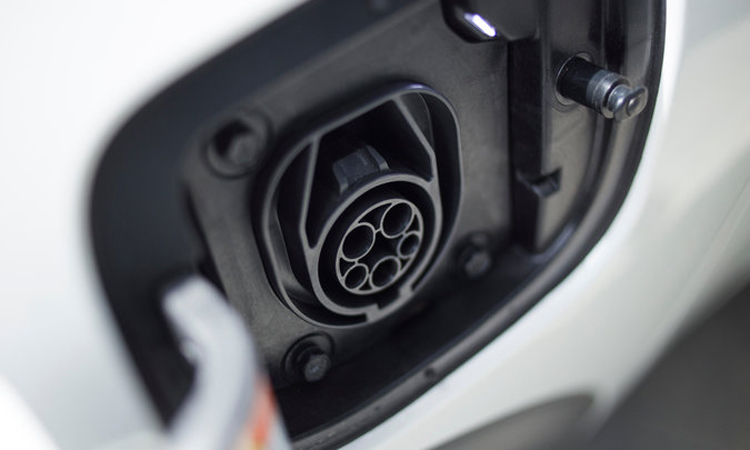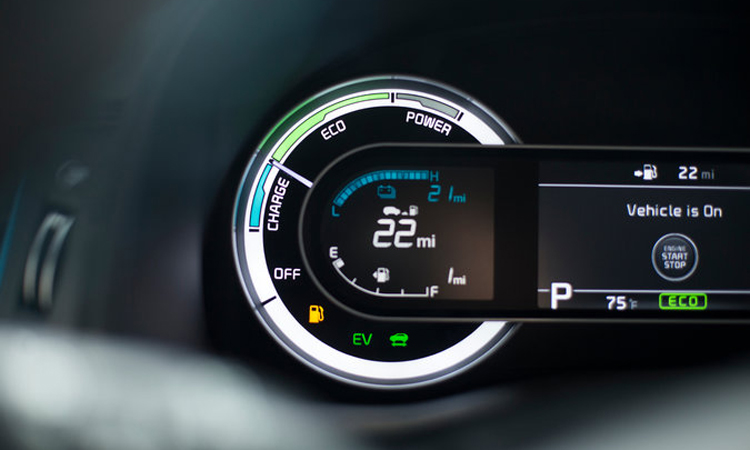Could this year be the turning point for plug-in hybrids?
When thinking about replacing your trusted old car with a new electric one, there are a couple of choices available. One for example, is the luxurious, high-end Tesla Model S, which would set you back around $70,000. Or you could go the opposite way, and look at the modest commuter, the Nissan Leaf that would only come in around $31,000.
However, 2017 is the year that this all changes, and brace yourselves there will be a lot more cars on your list to choose from.
Over 40 new electrified vehicles are coming out this year in the US, according to Baum & Associates, a research firm. Models that will include the Honda Clarity electric sedan and a Chrysler Pacifica minivan, and even the tiny Smart Fortwo line will abandon gas entirely in the United States in favor of all-electric powertrains.
More importantly, automakers claim, there promises to be a proliferation of plug-in hybrids similar to the Chevrolet Volt. Plug-in hybrids can drive in electric mode or use gas when the battery runs down.
This technology is proving flexible enough for a variety of vehicles from sports cars to compacts — and it eases the consumer fear that a driver will run out of power before finding a charging station.
More and more, plug-in hybrid models will go head-to-head with different versions of the same car. The current Kia Niro, for example, a hybrid that relies on a gas engine and braking to recharge its battery, will compete later this year with a plug-in hybrid sibling, with similar features and amenities including luggage space — and with a price to match, around $23,000.
“We want to be price-neutral for the consumer,” said Steve Kosowski, long-range strategy Manager for Kia Motors America. “When you walk into the showroom, it should be; why wouldn’t you buy this one?”
Some of the pricing parity relates to economies of scale.
“Battery prices have decreased by 70% over the last six years,” said Simon Mui, a Director at the non-profit Natural Resources Defense Council.
Additional tax and rebate incentives can also bring electrics more in line with their combustion engine counterparts. Federal tax subsidies of $7,500 are available for some models, and some states offer additional enticements.
New York recently began offering a rebate of up to $2,000 for some electric, fuel-cell and plug-in cars. With these incentives shaving up to $9,500 off the price of a car, automakers hope to attract more buyers.
The ultimate goal is to accustom consumers to treating electrification as just another powertrain option, like the choice between a V6 and a V8 engine or between rear-wheel and all-wheel drive.
Companies such as Mercedes-Benz are even on board and will have a total of seven plug-in hybrid and fully electric models by the end of the year, as it adopts a similar marketing philosophy with its flagship S-Class sedan, which starts at about $100,000.
“The strategy is to make the latest S-550e plug-in the same price as the V8 counterpart,” said Paul La Penta, a supervisor in electromobility at Mercedes-Benz.
Mercedes and others are also looking to plug-in technology to give their cars a performance boost. At the recent New York International Auto Show, Mercedes trotted out a GT Concept car that produces over 800 horsepower combining a V8 combustion engine with an electric module, not unlike current Formula One racecar designs.
Indeed, one of Porsche’s performance-leading cars this year will be the forthcoming 2018 Panamera Turbo S E-Hybrid, a plug-in hybrid four-door that will go from 0 to 60mph in a little over three seconds.
“The biggest benefit of these cars is the torque,” said Frank Wiesmann, a spokesman for Porsche, referring to the superiority of electric motors in delivering an initial boost from a standing start. “With electric help, it’s faster to 60mph and delivers a higher top speed.”
For all the optimism and hype, those in the electrification market inevitably face questions about the President’s administration’s stated goal to roll back current fuel economy standards, thus possibly killing the electric car. Federal standards adopted in 2012 require car companies to improve the average fuel economy of new cars and light trucks to 54.5 miles per gallon by 2025. Reducing or even eliminating such requirements could inhibit development.
However, analysts and many car companies point to California, which has a waiver under the Clean Air Act that allows the state to set its own standards. The California Air Resources Board recently voted to stick with the existing emissions goals.
Twelve other states, including New York, Pennsylvania and Oregon, say they will fall in line with California’s rules. Together they represent more than a third of the car market in the United States, Mui said.
“There’s a Jekyll-and-Hyde component to automakers,” Mui said. “Engineers say, yes. Lobbyists say, no, don’t make us do this. They are conflicted.”
But like a supertanker under full power, the electrification ship may be too hard to turn around. In interviews with car company representatives, the most often repeated responses to questions regarding the easing of current regulations were: “We like to plan long term” and “We’re a global company.”
It takes several years to design and build a new car, and many electric vehicles are already in development. General Motors representatives stressed that the automotive industry was a long-term, capital-intensive business. Kia said it was already investing $10.2bn over five years on vehicles ranging from plug-in hybrids to those running on fuel cells.
Other car markets, such as China, are offering their own incentives to encourage electrics and plug-in hybrids, regardless of what happens in the United States.
Consequently, car platforms, like this year’s Hyundai Ioniq and Honda Clarity, were planned in advance to feature different power units.
“We want to demonstrate several different powertrains in the same market,” said Steve Center of Honda’s environmental business development office. Such models often offer plug-in and pure electric versions, as well as hydrogen fuel-cell options. These are no longer combustion engine models simply retrofitted with electric motors, nor are they impractical experimental vehicles.
“Now, we’re developing the plug-in version right from the beginning,” La Penta of Mercedes said.
Indeed, automakers across the board are hoping that plug-in hybrids prove to be the gateway to fully electric vehicles. While the electric-only range of plug-in vehicles can be modest at best — Mercedes’s S-Class plug-in hybrid can go only 13 miles solely under electric power — it is improving. When the Chevy Volt was introduced in late 2010, it could travel only 35 miles before having to rely on gas. This year’s model can go 53 miles without having to switch over.
As drivers become more comfortable with these cars, the thinking goes, the anxiety over having to recharge electric vehicles’ batteries every day will lessen.
Electric-only vehicles are also improving their range. The electric version of the Kia Soul has a 93-mile range while the Chevy Bolt has a 238-mile range.
According to G.M., a 40-mile range should meet the needs of about 80% of American drivers. But the psychological barrier still exists. Fred Ligouri, a Chevrolet spokesman, said that 200 miles on a single charge seemed to satisfy most consumers. Hence, cars like the Tesla Model S and Chevy Bolt are seen as breaking the range-anxiety barrier.
When analysts look back, 2017 may turn out to be the tipping point in popularizing plug-in hybrids and electric vehicles. Companies are promising more to come. Porsche says it plans to introduce an electric sports car that can go 300 miles on a single charge by the end of the decade. And Tesla is expected to announce plans for the first production all-electric truck this fall.
When Chevrolet introduced the plug-in Volt more than seven years ago, it received considerable press criticism for failing to meet high expectations. The question is, with so many companies now following in its footsteps, does it feel vindicated?
“There’s a lot of pressure on being first,” Ligouri added. “But we showed there’s customer demand for this.”





Comments are closed, but trackbacks and pingbacks are open.